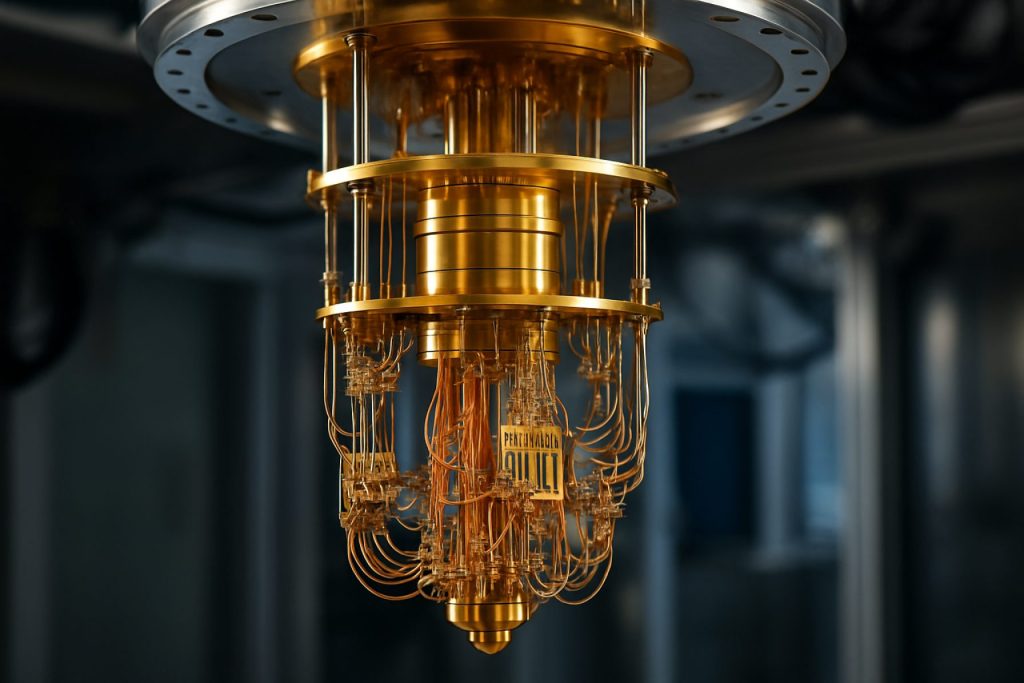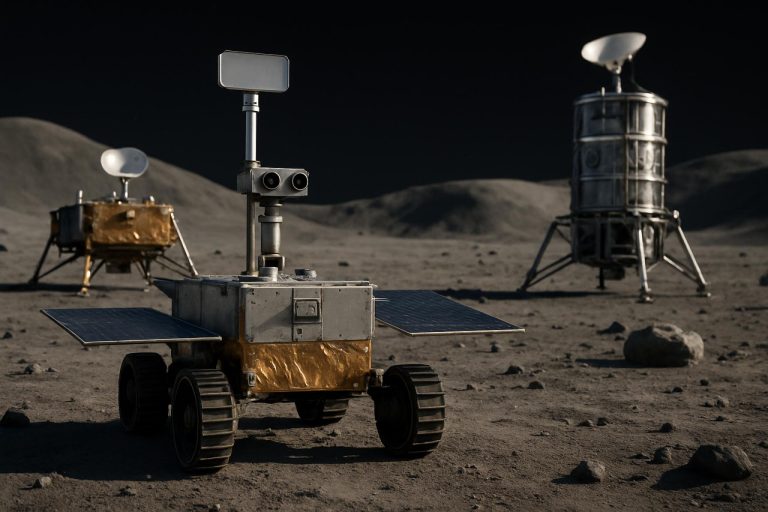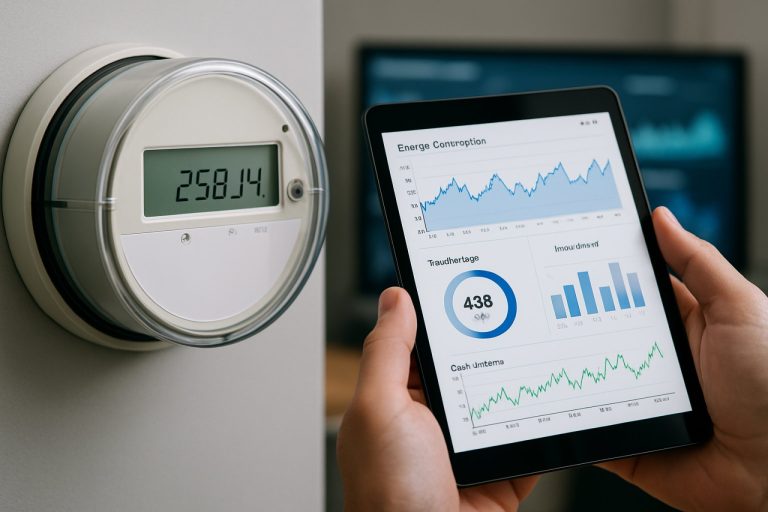
Quantum Annealing Hardware Development in 2025: Unleashing Next-Gen Computing Power and Market Expansion. Explore the Technologies, Key Players, and Forecasts Shaping the Future of Quantum Optimization.
- Executive Summary: Quantum Annealing Hardware in 2025
- Market Size, Growth Rate & Forecasts (2025–2030)
- Key Players and Industry Ecosystem Overview
- Technological Innovations and Roadmaps
- Materials Science and Engineering Challenges
- Application Domains: Optimization, AI, and Beyond
- Competitive Landscape and Strategic Partnerships
- Regulatory, Standards, and Industry Initiatives
- Investment Trends and Funding Analysis
- Future Outlook: Opportunities, Risks, and Disruption Potential
- Sources & References
Executive Summary: Quantum Annealing Hardware in 2025
Quantum annealing hardware development in 2025 is characterized by a maturing ecosystem, with a handful of specialized companies advancing the state of the art in quantum optimization machines. The field remains distinct from gate-based quantum computing, focusing on solving combinatorial optimization problems using quantum effects such as tunneling and superposition. The most prominent player, D-Wave Systems Inc., continues to lead the sector, having commercialized quantum annealers since 2011 and now offering their fifth-generation Advantage2 system. This platform, expected to be widely available in 2025, features over 7,000 qubits and 20-way connectivity, a significant leap from previous generations, and is designed to improve solution quality and scalability for real-world optimization tasks.
In parallel, hardware innovation is being driven by advances in superconducting qubit fabrication, cryogenic engineering, and control electronics. D-Wave Systems Inc. has invested in reducing noise and crosstalk, which are critical for reliable annealing performance. The company’s open-source Ocean software stack and Leap cloud platform have also expanded access to quantum annealing hardware, enabling researchers and enterprises to experiment with hybrid quantum-classical workflows.
While D-Wave remains the only company with commercially available large-scale quantum annealers, other organizations are exploring alternative approaches. Fujitsu Limited has developed the Digital Annealer, a CMOS-based system that emulates quantum annealing principles for combinatorial optimization, and continues to refine its hardware and cloud offerings. Although not a true quantum device, the Digital Annealer is positioned as a bridge technology, providing quantum-inspired optimization at scale and serving as a testbed for future quantum hardware integration.
Looking ahead, the next few years are expected to bring incremental improvements in qubit coherence, connectivity, and system integration. D-Wave’s roadmap includes further scaling of qubit numbers and connectivity, as well as the development of error mitigation techniques tailored to annealing architectures. Industry partnerships with sectors such as logistics, finance, and manufacturing are anticipated to drive application-specific hardware optimizations. Meanwhile, research institutions and government agencies are supporting open innovation and benchmarking efforts to evaluate quantum annealing’s practical advantages.
In summary, 2025 marks a period of consolidation and targeted growth for quantum annealing hardware. The sector is poised for gradual but meaningful progress, with D-Wave Systems Inc. and Fujitsu Limited at the forefront, and a growing emphasis on real-world deployment, hybridization, and ecosystem development.
Market Size, Growth Rate & Forecasts (2025–2030)
The quantum annealing hardware market is poised for significant growth between 2025 and 2030, driven by increasing investments in quantum computing and the expanding applicability of quantum annealing for optimization problems in logistics, finance, and materials science. As of 2025, the market remains relatively niche compared to gate-based quantum computing, but it is characterized by a small number of specialized players, most notably D-Wave Systems Inc., which has been the primary commercial supplier of quantum annealers since the early 2010s.
D-Wave’s latest generation, the Advantage2 system, is expected to be commercially available by 2025, featuring over 7,000 qubits and improved connectivity, a substantial leap from its previous 5,000-qubit Advantage system. This hardware evolution is anticipated to drive adoption among enterprise and research customers seeking to solve complex combinatorial optimization problems. D-Wave’s quantum annealers are accessible both via on-premises installations and through cloud-based services, broadening market reach and lowering barriers to entry for organizations exploring quantum solutions.
While D-Wave remains the dominant force, other companies and research consortia are exploring alternative quantum annealing architectures. For example, Fujitsu Limited has developed the Digital Annealer, a CMOS-based system inspired by quantum annealing principles, targeting similar optimization use cases. Although not a true quantum device, the Digital Annealer competes in the same market segment and is expected to see incremental hardware improvements and expanded cloud offerings through 2030.
The market’s growth rate is projected to accelerate as quantum annealing hardware demonstrates practical value in real-world applications. Key sectors such as supply chain optimization, portfolio management, and drug discovery are expected to drive demand. Partnerships between hardware vendors and industry end-users, as well as collaborations with cloud service providers, will further stimulate market expansion. For instance, D-Wave’s collaboration with Amazon through the Amazon Braket platform exemplifies the integration of quantum annealing into mainstream cloud ecosystems.
Looking ahead, the quantum annealing hardware market is forecasted to grow at a compound annual growth rate (CAGR) in the high double digits through 2030, albeit from a modest base. The pace of growth will depend on continued hardware scaling, error reduction, and the demonstration of quantum advantage in commercially relevant problems. As more organizations pilot and deploy quantum annealing solutions, the sector is expected to transition from early adoption to broader commercialization by the end of the decade.
Key Players and Industry Ecosystem Overview
Quantum annealing hardware development is a specialized segment within the broader quantum computing industry, with a focus on solving optimization problems using quantum effects. As of 2025, the industry ecosystem is characterized by a small number of dedicated hardware developers, a growing network of component suppliers, and increasing collaboration with academic and industrial partners.
The undisputed leader in commercial quantum annealing hardware is D-Wave Systems Inc., headquartered in Canada. D-Wave has been developing quantum annealers since 2007 and remains the only company to have delivered multiple generations of commercial quantum annealing processors. Their latest platform, the Advantage2, is expected to feature over 7,000 qubits and improved connectivity, building on the Pegasus and Zephyr topologies. D-Wave’s systems are accessible both via on-premises installations and through cloud services, with partnerships spanning sectors such as logistics, finance, and pharmaceuticals.
Other notable contributors to the quantum annealing ecosystem include hardware component suppliers and research institutions. Companies such as Lake Shore Cryotronics, Inc. and Bluefors Oy provide essential cryogenic infrastructure required for operating superconducting quantum processors at millikelvin temperatures. These suppliers are critical for enabling the stable operation of quantum annealers and are expanding their offerings to support larger and more complex systems.
In addition to hardware, the ecosystem includes specialized electronics and control system providers. RIGOL Technologies, Inc. and Teledyne Technologies Incorporated supply high-precision measurement and signal generation equipment, which are integral to the calibration and operation of quantum annealing devices.
Academic and government research organizations also play a significant role. Institutions such as the National Institute of Standards and Technology (NIST) and various university quantum centers collaborate with hardware manufacturers to advance materials science, error correction, and device architecture.
Looking ahead, the quantum annealing hardware sector is expected to see incremental improvements in qubit count, connectivity, and noise reduction. D-Wave’s continued roadmap, along with potential new entrants from established quantum computing companies, may further diversify the ecosystem. However, as of 2025, D-Wave remains the primary commercial force, with a robust network of suppliers and collaborators supporting the ongoing evolution of quantum annealing technology.
Technological Innovations and Roadmaps
Quantum annealing hardware development is experiencing a period of significant innovation and strategic roadmap evolution as the field matures into 2025 and beyond. The primary focus remains on scaling up qubit counts, improving coherence times, and enhancing connectivity, all of which are critical for solving increasingly complex optimization problems.
The most prominent player in this sector is D-Wave Systems Inc., which has been the only commercial provider of quantum annealers for over a decade. D-Wave’s Advantage system, launched in 2020, features over 5,000 superconducting qubits and 15-way connectivity, representing a substantial leap from its earlier generations. In 2023, D-Wave announced its next-generation Advantage2 prototype, which is expected to scale up to 7,000 qubits with even higher connectivity and lower noise, targeting full commercial release in 2025. The company’s hardware roadmap emphasizes not only qubit scaling but also improvements in qubit quality and error rates, as well as the integration of hybrid quantum-classical workflows to broaden practical applicability.
In parallel, Fujitsu Limited continues to advance its Digital Annealer, a quantum-inspired architecture that leverages CMOS technology to simulate quantum annealing processes. While not a true quantum device, the Digital Annealer is positioned as a bridge technology, offering high-speed combinatorial optimization capabilities and serving as a testbed for future quantum annealing hardware. Fujitsu’s roadmap includes ongoing R&D into quantum hardware, with the company collaborating with academic and industrial partners to explore superconducting and photonic qubit technologies.
Another notable entrant is Toshiba Corporation, which is developing quantum-inspired optimization hardware and has signaled intentions to pursue quantum annealing systems based on its expertise in cryogenics and quantum devices. Toshiba’s research groups are actively investigating scalable architectures and error mitigation techniques, with pilot systems expected to emerge in the next few years.
Looking ahead, the quantum annealing hardware landscape is expected to diversify as new players and consortia enter the field, leveraging advances in materials science, cryogenics, and control electronics. The next few years will likely see the emergence of prototype systems with tens of thousands of qubits, improved error correction, and tighter integration with classical computing resources. These developments are anticipated to expand the range of real-world problems addressable by quantum annealing, particularly in logistics, finance, and machine learning.
Overall, the period through 2025 and beyond will be marked by both incremental and breakthrough innovations, as established leaders like D-Wave push the boundaries of quantum annealing hardware and new entrants accelerate the pace of technological progress.
Materials Science and Engineering Challenges
Quantum annealing hardware development is fundamentally shaped by advances and challenges in materials science and engineering. As of 2025, the field is dominated by efforts to improve coherence times, scalability, and integration density, with a particular focus on superconducting materials and fabrication techniques. The leading commercial provider, D-Wave Systems Inc., continues to push the boundaries of quantum annealing processors, having released its Advantage2 prototype with over 7,000 qubits and improved connectivity. Their hardware relies on superconducting niobium-based Josephson junctions, which require ultra-low temperatures and precise fabrication to minimize noise and decoherence.
A central challenge remains the reduction of noise and crosstalk between qubits, which is exacerbated as device density increases. Materials defects at the atomic scale, such as two-level systems in dielectrics and surface oxides, are a persistent source of decoherence. To address this, research is ongoing into alternative superconducting materials, including tantalum and titanium nitride, which may offer improved coherence properties. Additionally, advances in thin-film deposition and etching processes are critical for achieving the uniformity and reproducibility required for large-scale quantum annealing chips.
Another engineering hurdle is the integration of control and readout circuitry. As quantum annealers scale to tens of thousands of qubits, the complexity of wiring and the need for cryogenic-compatible electronics become more pronounced. Efforts are underway to develop cryo-CMOS and other low-temperature electronics to enable more efficient control architectures. D-Wave Systems Inc. has reported progress in this area, but further innovation is needed to support the next generation of devices.
Thermal management is also a significant concern. Quantum annealing processors must operate at millikelvin temperatures, necessitating advanced cryogenic systems. The development of more efficient dilution refrigerators and improved thermal anchoring of components is a focus for both hardware manufacturers and suppliers of cryogenic infrastructure, such as Bluefors Oy, a leading provider of cryogenic systems for quantum computing.
Looking ahead, the outlook for quantum annealing hardware is cautiously optimistic. Incremental improvements in materials purity, fabrication precision, and cryogenic engineering are expected to yield devices with higher qubit counts, better connectivity, and longer coherence times over the next few years. However, fundamental materials challenges—such as eliminating microscopic defects and engineering interfaces at the atomic level—will continue to define the pace of progress in quantum annealing hardware development.
Application Domains: Optimization, AI, and Beyond
Quantum annealing hardware development is entering a pivotal phase in 2025, with significant advancements driven by both established players and emerging entrants. The primary focus remains on scaling up qubit counts, improving coherence times, and enhancing connectivity to address increasingly complex optimization and AI problems.
The most prominent company in this domain is D-Wave Systems Inc., which has been commercializing quantum annealers since 2011. D-Wave’s latest platform, the Advantage system, features over 5,000 superconducting qubits and 15-way connectivity, enabling the solution of larger and more intricate combinatorial optimization problems. In 2025, D-Wave is expected to further expand its hardware capabilities, with ongoing research into next-generation processors that aim to increase qubit numbers and connectivity, as well as reduce noise and error rates. The company is also investing in hybrid quantum-classical workflows to bridge the gap between current hardware limitations and real-world application requirements.
Another notable player is Fujitsu Limited, which has developed the Digital Annealer—a CMOS-based architecture inspired by quantum annealing principles. While not a quantum device in the strict sense, the Digital Annealer is designed to tackle large-scale combinatorial optimization problems and is being positioned as a complementary technology to quantum hardware. Fujitsu continues to refine its hardware and software stack, targeting logistics, finance, and drug discovery sectors.
In parallel, Toshiba Corporation is advancing its Simulated Bifurcation Machine (SBM), a classical hardware solution that emulates quantum annealing dynamics. Toshiba’s SBM is being deployed for real-time optimization in energy management and transportation, and the company is exploring integration with quantum hardware for hybrid solutions.
Looking ahead, the quantum annealing hardware landscape is expected to diversify, with new entrants exploring alternative qubit technologies such as photonics and trapped ions. However, superconducting qubits remain the dominant approach due to their maturity and scalability. Industry roadmaps suggest that by the late 2020s, quantum annealers with tens of thousands of qubits and improved error mitigation will become available, further expanding their applicability in AI, logistics, and materials science.
Overall, 2025 marks a period of rapid iteration and ecosystem building, as hardware developers collaborate with end-users to co-design solutions tailored to specific optimization and AI challenges. The next few years will likely see quantum annealing hardware transition from experimental to production-grade systems, unlocking new commercial and scientific opportunities.
Competitive Landscape and Strategic Partnerships
The competitive landscape for quantum annealing hardware development in 2025 is characterized by a small but dynamic group of technology companies, each pursuing distinct strategies to advance the field. The sector is led by D-Wave Systems Inc., widely recognized as the pioneer and dominant commercial supplier of quantum annealing processors. D-Wave’s Advantage system, featuring over 5,000 qubits, remains the most advanced commercially available quantum annealer, and the company has announced plans to further scale qubit counts and connectivity in upcoming generations. D-Wave’s hardware is accessible both through direct system sales and via its Leap quantum cloud service, which has fostered a growing ecosystem of users and partners across logistics, finance, and research sectors.
Strategic partnerships are central to D-Wave’s approach. The company has established collaborations with major cloud providers, such as Amazon (through Amazon Braket), and with research institutions and enterprise clients to accelerate real-world adoption. In 2024 and 2025, D-Wave has expanded its alliances with global technology integrators and supercomputing centers, aiming to integrate quantum annealing into hybrid quantum-classical workflows. These partnerships are expected to deepen as D-Wave pursues its next-generation hardware roadmap, which includes enhanced error mitigation and new annealing modalities.
While D-Wave remains the only company with large-scale, commercially deployed quantum annealers, several other organizations are entering the competitive landscape. Fujitsu Limited has developed the Digital Annealer, a CMOS-based system inspired by quantum annealing principles, targeting combinatorial optimization problems. Although not a true quantum device, Fujitsu’s system competes in similar application domains and is marketed through partnerships with financial and industrial clients. Toshiba Corporation is also active, offering its Simulated Bifurcation Machine, which leverages classical hardware to emulate quantum annealing for optimization tasks.
Looking ahead, the competitive landscape is expected to evolve as new entrants and research-driven startups explore alternative quantum annealing architectures, including superconducting, photonic, and hybrid approaches. Strategic partnerships—particularly those linking hardware developers with cloud platforms, enterprise users, and academic consortia—will remain critical for scaling adoption and validating commercial use cases. As quantum annealing hardware matures, the next few years will likely see intensified collaboration and competition, with a focus on increasing qubit counts, improving coherence, and demonstrating clear advantages over classical optimization technologies.
Regulatory, Standards, and Industry Initiatives
Quantum annealing hardware development is increasingly influenced by evolving regulatory frameworks, emerging standards, and collaborative industry initiatives. As quantum computing transitions from research to commercialization, the need for robust standards and regulatory clarity has become more pronounced, particularly for quantum annealing—a specialized approach to solving optimization problems.
In 2025, the regulatory landscape for quantum annealing hardware is still nascent but rapidly maturing. Governments in North America, Europe, and Asia are actively exploring policy frameworks to ensure the secure and ethical deployment of quantum technologies. For instance, the European Union’s Quantum Flagship program continues to support the development of quantum hardware, including annealers, while emphasizing interoperability and security standards across member states. Similarly, the United States has expanded its National Quantum Initiative, fostering public-private partnerships and funding for quantum hardware research, with a focus on establishing best practices and pre-competitive standards.
Industry-driven standardization efforts are gaining momentum. The IEEE Quantum Initiative is working on technical standards for quantum computing interfaces, benchmarking, and performance metrics, which are directly relevant to quantum annealing systems. These standards aim to facilitate interoperability between hardware platforms and software tools, enabling broader adoption and integration of quantum annealers into enterprise workflows.
Key industry players are also shaping the standards landscape. D-Wave Systems Inc., the leading commercial provider of quantum annealing hardware, is actively involved in industry consortia and standards bodies. D-Wave collaborates with organizations such as the Quantum Economic Development Consortium (QED-C) to define benchmarks, security protocols, and best practices for quantum annealing devices. These efforts are critical as D-Wave’s Advantage and upcoming hardware generations are deployed in cloud and on-premises environments, raising new questions about data privacy, system integrity, and cross-platform compatibility.
In Japan, Hitachi, Ltd. and other technology conglomerates are participating in national quantum initiatives, contributing to the development of guidelines for quantum annealing hardware and its integration with classical IT infrastructure. These initiatives often involve collaboration with academic institutions and government agencies to ensure that emerging standards reflect both technical realities and societal needs.
Looking ahead, the next few years are expected to see the formalization of quantum annealing hardware standards, particularly around benchmarking, error mitigation, and cybersecurity. Industry consortia and standards organizations will likely play a pivotal role, with regulatory agencies providing oversight to ensure responsible innovation. As quantum annealing hardware becomes more widely adopted, adherence to these evolving standards will be essential for market acceptance, cross-border collaboration, and the realization of quantum advantage in real-world applications.
Investment Trends and Funding Analysis
Quantum annealing hardware development has seen a dynamic investment landscape in 2025, reflecting both the promise and technical challenges of this quantum computing approach. The sector is dominated by a handful of specialized companies, with D-Wave Systems Inc. remaining the most prominent commercial player. D-Wave has continued to attract significant funding rounds, leveraging its established customer base and ongoing hardware upgrades. In early 2025, D-Wave announced new investments from both existing and new institutional investors, aimed at accelerating the development of its next-generation Advantage2 quantum annealer, which is expected to feature over 7,000 qubits and improved connectivity.
Venture capital and strategic corporate investments have also flowed into emerging startups and academic spin-offs exploring alternative annealing architectures and materials. While D-Wave’s dominance is clear, the field has seen increased activity from companies in Japan and South Korea, where government-backed initiatives are supporting domestic quantum hardware development. For example, Hitachi, Ltd. and Fujitsu Limited have both announced expanded R&D budgets for quantum annealing and related quantum-inspired computing platforms, with a focus on scaling up device performance and integration with classical HPC systems.
Public funding remains a critical driver, particularly in Europe and Asia. The European Union’s Quantum Flagship program continues to allocate resources to collaborative projects involving quantum annealing hardware, with several consortia led by research institutes and industrial partners. In South Korea, the government has increased its quantum technology budget for 2025, with a portion earmarked for annealing hardware research, supporting both academic labs and private sector initiatives.
Despite the influx of capital, the investment environment is characterized by cautious optimism. Investors are increasingly focused on near-term commercial applications, such as logistics optimization and machine learning, that can demonstrate quantum advantage on annealing platforms. This has led to a shift in funding priorities, with more emphasis on software-hardware co-development and hybrid quantum-classical solutions.
Looking ahead, the outlook for quantum annealing hardware investment in the next few years is positive but selective. The sector is expected to see continued consolidation, with leading players like D-Wave Systems Inc. and major Asian conglomerates attracting the bulk of new funding. However, as technical milestones are met and early commercial use cases mature, there is potential for new entrants and increased cross-border collaborations, particularly in regions with strong public sector support.
Future Outlook: Opportunities, Risks, and Disruption Potential
Quantum annealing hardware development is poised for significant evolution in 2025 and the following years, driven by both technological advances and growing commercial interest. The sector is currently led by D-Wave Systems Inc., which has been the primary provider of commercially available quantum annealers. D-Wave’s latest Advantage2 system, expected to be widely accessible by 2025, features over 7,000 qubits and improved connectivity, marking a substantial leap in hardware capability. This progress is anticipated to enable more complex optimization problems to be addressed, expanding the range of practical applications in logistics, finance, and materials science.
Other industry players are beginning to enter the quantum annealing space, signaling a shift from single-vendor dominance. For example, Fujitsu Limited has developed its Digital Annealer, a CMOS-based system inspired by quantum annealing principles, which is already being deployed for combinatorial optimization tasks. While not a true quantum device, its architecture and performance are influencing the competitive landscape and pushing the boundaries of what is possible with annealing-inspired hardware.
Looking ahead, the next few years are expected to see increased investment in scaling up qubit numbers, improving coherence times, and enhancing qubit connectivity. These technical milestones are critical for solving larger, real-world problems and for demonstrating quantum advantage over classical approaches. The emergence of hybrid quantum-classical workflows, supported by both D-Wave Systems Inc. and Fujitsu Limited, is likely to accelerate adoption by allowing users to leverage quantum annealers alongside conventional high-performance computing resources.
However, the field faces notable risks and uncertainties. Quantum annealing hardware must contend with issues such as noise, error rates, and the challenge of scaling to thousands or millions of qubits while maintaining performance. There is also the risk of disruption from alternative quantum computing paradigms, such as gate-based superconducting or trapped-ion systems, which are being advanced by companies like IBM and IonQ, Inc.. Should these platforms achieve practical quantum advantage first, the relevance of quantum annealing hardware could be challenged.
Despite these risks, the outlook for quantum annealing hardware in 2025 and beyond remains promising. The technology’s unique suitability for optimization problems, combined with ongoing hardware improvements and the entry of new players, suggests that quantum annealing will continue to play a vital role in the broader quantum computing ecosystem, at least in the medium term.
Sources & References
- D-Wave Systems Inc.
- Fujitsu Limited
- Amazon
- Lake Shore Cryotronics, Inc.
- Bluefors Oy
- RIGOL Technologies, Inc.
- Teledyne Technologies Incorporated
- National Institute of Standards and Technology (NIST)
- Toshiba Corporation
- Toshiba Corporation
- IEEE
- Hitachi, Ltd.
- IBM
- IonQ, Inc.



